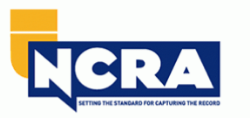Trial Presentation Customized Solutions for Engaging Legal Presentations
Grasping Trial Presentation: Tips for Engaging and Persuasive Court Room Techniques
In the realm of trial discussion, the capacity to involve and convince is extremely important. The obstacle lies in effortlessly incorporating them right into a cohesive discussion. What strategies can truly elevate a trial discussion from common to exceptional?
Recognizing Your Target Market
To effectively master trial presentation, it is essential to recognize your audience. In the court, your target market primarily contains jurors, the judge, and opposite guidance. Each group possesses unique perspectives, experiences, and prejudices that can affect their reception of your arguments. Jurors, for example, are charged with translating proof and establishing truths based upon their individual beliefs and values. Understanding their demographics, histories, and prospective biases can aid customize your discussion to resonate with them successfully.

A recognition of the court's choices and court rules is equally important, as it can impact the circulation of your discussion. Juries may prioritize brevity and quality, so offering your instance in a simple way can enhance your reliability. Additionally, identifying the rival advice's techniques can aid in preparing counterarguments that properly resolve their points.
Ultimately, recognizing your audience allows you to involve them a lot more efficiently, cultivating link and persuasion throughout the trial (trial presentation). By leveraging understandings regarding their motivations and assumptions, you can produce a compelling discussion that resonates and inevitably influences the end result of the situation. This fundamental knowledge is necessary for any kind of attorney aiming to attain success in the court room
Crafting a Compelling Story
A well-crafted narrative offers as the backbone of a reliable trial discussion, guiding the target market through the intricacies of the case. This story should be structured to involve jurors emotionally and intellectually, making the truths relatable and easy to understand. By weaving together the elements of the instance-- such as the timeline, essential occasions, and pivotal statements-- lawyers can produce a systematic storyline that resonates with jurors.
To attain this, it is vital to recognize the central styles that will certainly drive the story. Attorneys must concentrate on the motivations and goals of the events involved, illustrating the human aspects of the case (trial presentation). This technique not just maintains juror rate of interest yet additionally fosters empathy, leading them to link directly with the story
Additionally, making use of clear and succinct language is vital. Staying clear of lawful lingo allows the audience to understand the necessary factors without complication. Each sector of the narrative should build toward a compelling climax, finishing in an influential verdict that reinforces the case's core message. Ultimately, a strong narrative not only clarifies the issues at hand but likewise produces an enduring perception that can affect the result of the trial.
Making Use Of Visual Aids Efficiently
Exactly how can aesthetic help improve the performance of a test discussion? Aesthetic help work as powerful tools that can dramatically enhance juror understanding and retention of complicated info - trial presentation. When utilized thoughtfully, they can clear up bottom lines, illustrate connections, and highlight essential proof that sustains the case narrative
Reliable visual aids include charts, charts, timelines, and photos, which can simplify complex data and provide context. For example, a timeline can succinctly communicate the sequence of events, while a graph can highlight statistical details in an aesthetically appealing manner. click over here now The critical use multimedia discussions can likewise enhance involvement and preserve juror rate of interest throughout the test.
Furthermore, aesthetic aids can aid to evoke psychological feedbacks, strengthening the human components of a case. By presenting photos or video clips relevant to the situation, attorneys can develop an extra engaging and relatable story. It is essential to make sure that aesthetic help are professionally developed and not overly intricate, as this can lead to confusion instead than clearness.
Involving Body Language Techniques
Visual aids are not the only devices that can improve the next performance of a trial presentation; involving body language strategies additionally play a vital duty in recording juror focus and communicating confidence. A presenter's nonverbal signs can considerably influence jurors' assumptions and responses, making it vital to understand these strategies.

In addition, varying your singing tone and speed can boost your narration, making it more engaging. Stopping briefly purposefully enables jurors to absorb essential details and signals the significance of what you are claiming. Finally, moving actively within the court can assist reinforce your points, supplied it does not sidetrack from your message.
Integrating these body movement strategies will not only boost your courtroom visibility however also cultivate my explanation a more convincing link with jurors, inevitably contributing to the success of your test presentation.
Exercising for Influence
Efficient test discussions pivot not only on the content but additionally on the distribution, making method necessary for effect. The value of wedding rehearsal can not be overstated; it allows lawyers to fine-tune their arguments and create a commanding presence in the court room. Participating in purposeful practice aids attorneys to identify their toughness and weak points, enabling them to adjust their pacing, tone, and body movement appropriately.
To practice for effect, imitate trial conditions as carefully as feasible. This consists of using visual help, exercising in front of coworkers, and soliciting useful comments.

Conclusion
Grasping test presentation involves a diverse technique that incorporates audience understanding, narrative development, visual aids, and body movement. These components work synergistically to create a convincing court room experience. By properly engaging jurors through clear narration and impactful visuals, and by using certain body movement, trial advocates can substantially boost their debates. Strenuous practice in simulated settings even more solidifies these techniques, making sure that each discussion reverberates and leaves a long-term impression on the jury.